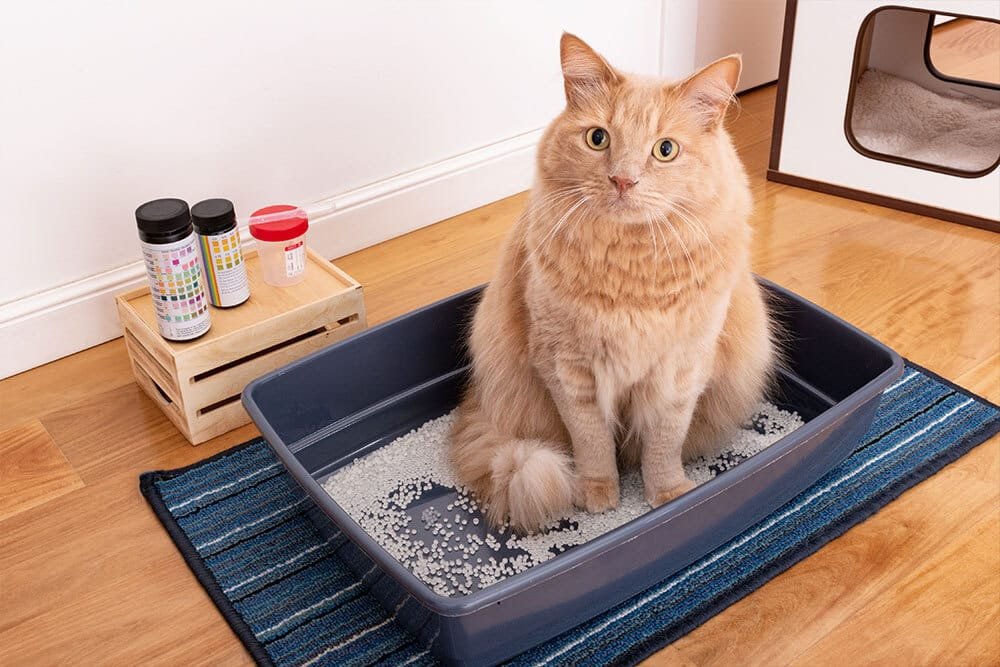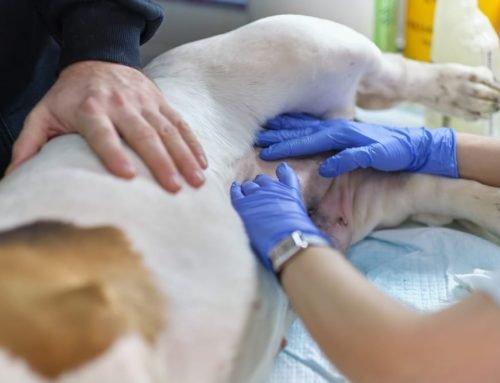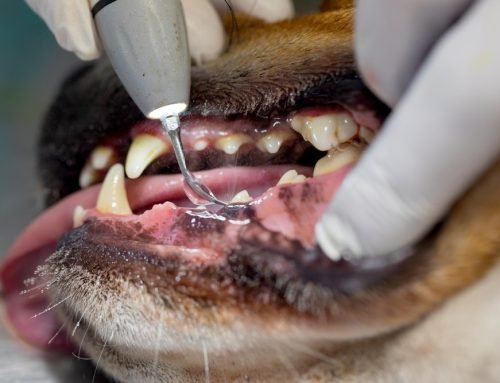Urinary Blockages in Cats: Symptoms, Causes, and Urgent Care
A cat that can’t urinate is experiencing more than discomfort—it’s facing a life-threatening medical emergency.
Urinary blockages, especially in male cats, are one of the most critical conditions we treat at St. Petersburg Animal Hospital & Urgent Care. Left untreated, a blockage can lead to kidney failure, severe electrolyte imbalances, or even death within 24–48 hours.
In this guide, we’ll help you understand how to recognize the signs, why blockages happen, what to expect during treatment, and how to prevent future episodes—because when it comes to urinary health, every hour counts.
What Is a Urinary Blockage?
A urinary blockage occurs when something obstructs the urethra, the tube that carries urine from the bladder out of the body. This is most common in male cats, whose urethras are narrower and more easily blocked than those of females.
When urine can’t pass, the bladder fills and becomes distended and painful. Toxins that are normally eliminated through urination begin to build up in the bloodstream, putting the kidneys, heart, and other systems at risk.
Without emergency treatment, this condition can quickly become fatal.
Learn more about urethral obstruction in cats from ACVS
Why Is It So Dangerous?
In a blocked cat:
- The bladder may rupture from pressure buildup.
- Potassium and other toxins accumulate rapidly, affecting heart function.
- Severe dehydration can occur, leading to shock or collapse.
- Death can result if left untreated, often within a day or two.
Time is truly of the essence. Immediate veterinary care is critical.
Symptoms: What to Watch For
Cats are experts at hiding discomfort, so symptoms can be easy to miss until the condition becomes severe. Be alert to the following red flags:
- Frequent attempts to urinate with little or no output
- Straining or crying in the litter box
- Licking at the genital area
- Blood-tinged or no urine
- Hiding or vocalizing more than usual
- Vomiting or refusing food
- Lethargy or sudden collapse
International Cat Care outlines how subtle early signs can be
If your cat shows any of these signs, assume it’s urgent and contact us immediately.
Causes: Why Do Blockages Happen?
Blockages are typically caused by:
- Urethral plugs made of crystals, mucus, or protein
- Urinary stones More on urinary stones from ACVS
- Feline idiopathic cystitis (FIC) – inflammation without infection Learn more about FIC
- Urinary tract infections (less common but possible)
- Anatomical abnormalities or trauma
Stress, dehydration, obesity, and a lack of environmental enrichment all contribute to the risk. Royal Canin offers insights on FLUTD and stress in cats
Diagnosis: What Happens at the Vet?
At St. Petersburg Animal Hospital & Urgent Care, we prioritize rapid diagnosis to relieve pain and avoid complications.
Common diagnostic tools include:
- Palpation of the bladder – it often feels hard and distended
- Bloodwork – to evaluate kidney values, electrolytes, and dehydration See our full in-house lab services
- Urinalysis – to check for crystals, blood, or bacteria
- X-rays or ultrasound – to identify stones or other obstructions
These tests also help us determine whether your cat needs immediate catheterization, hospitalization, or longer-term surgical treatment.
Treatment: What to Expect
Treating a blocked cat is a medical emergency and typically involves:
- Sedation or anesthesia to safely place a urinary catheter
- Bladder decompression to relieve pressure and drain urine
- IV fluids to flush the kidneys and correct imbalances
- Pain medication and muscle relaxants
- Hospitalization for monitoring over 1–3 days
In recurrent or severe cases, we may recommend a perineal urethrostomy (PU)—a surgery to create a wider urethral opening and reduce future risk.
Read about PU surgery on Hill’s Pet
Will It Happen Again?
Unfortunately, cats who experience one blockage are at higher risk for another. The good news is that with proper management, many can live full and comfortable lives.
Long-term prevention includes:
- Prescription urinary diets (to reduce crystal formation)
- Increased hydration (canned food, water fountains, broth)
- Reducing stress (play, vertical space, predictable routines)
- Litter box hygiene (multiple clean boxes in quiet areas)
- Regular check-ups and urinalysis
If your cat’s blockage was caused by infection, targeted antibiotics will also be prescribed. Embrace Pet Insurance outlines UTI care here
What About Female Cats?
While female cats rarely develop full blockages, they can suffer from:
- Feline idiopathic cystitis (FIC)
- Urinary crystals or stones
- Bladder inflammation and discomfort
Any change in litter box behavior, urination habits, or signs of discomfort should still prompt a veterinary visit. Cornell explains more about UTIs in pets

Prevention: Supporting Your Cat’s Urinary Health
Preventing blockages is a team effort. At home, you can help by:
- Feeding veterinary-recommended urinary support diets
- Offering multiple water sources and water-rich food
- Encouraging play and reducing stressors
- Monitoring litter box use and output
- Scheduling routine wellness exams
At St. Petersburg Animal Hospital & Urgent Care, we’ll help you create a personalized urinary health plan based on your cat’s history, risk factors, and lifestyle.
Take Action Quickly If You Suspect a Blockage
If your cat is straining, vocalizing, or producing little to no urine, do not wait overnight or until morning.
Urinary blockage is an emergency—and prompt intervention can be life-saving.
Call or visit our urgent care clinic immediately. Our experienced team is ready to provide fast, compassionate, and skilled care when you need it most.
Schedule a Preventive Urinary Health Check
Even if your cat is healthy now, a proactive urinary health check can catch subtle changes early and prevent future emergencies.
Book an appointment today or call us to talk through your concerns. We’re here to support your cat’s comfort, safety, and quality of life—every step of the way.







Leave A Comment